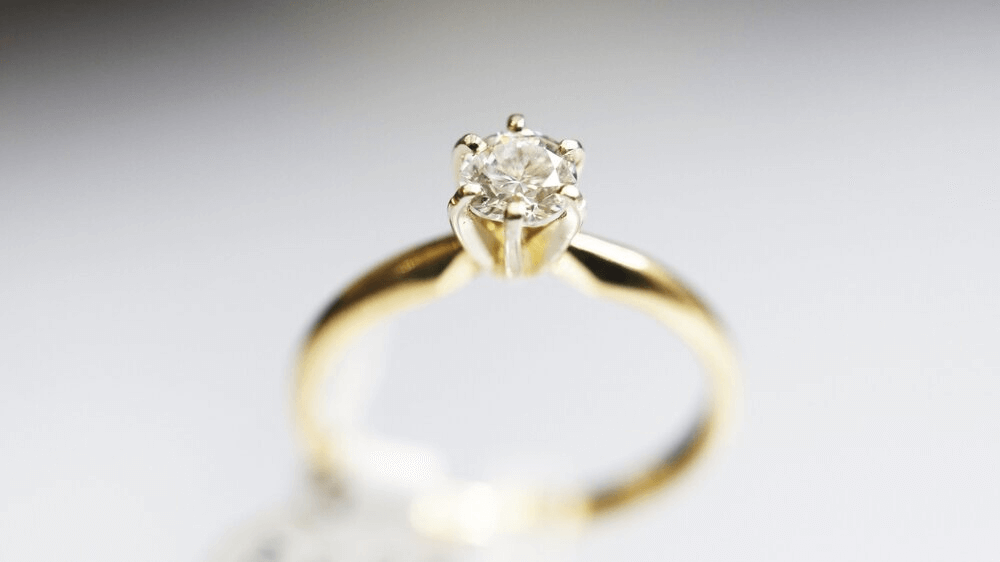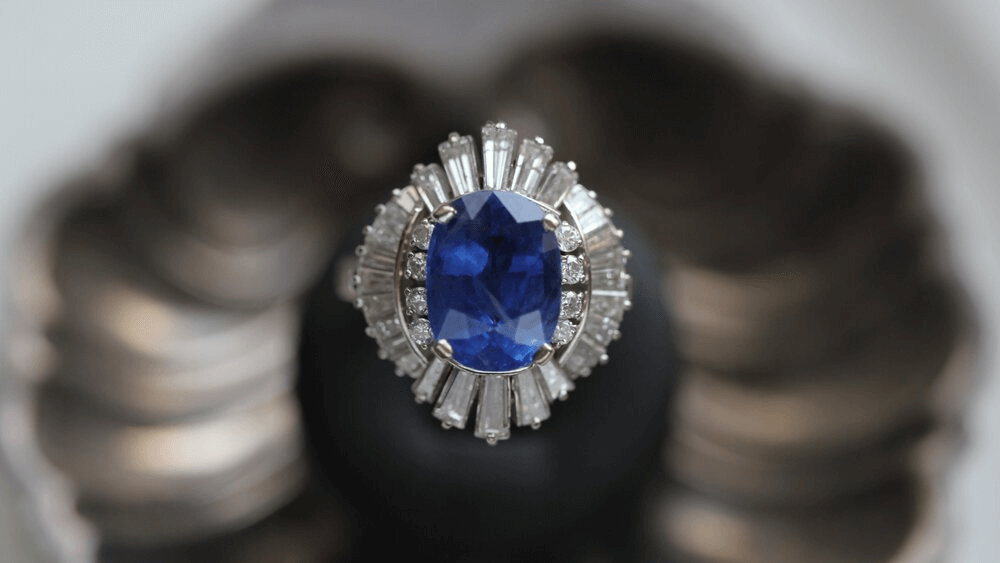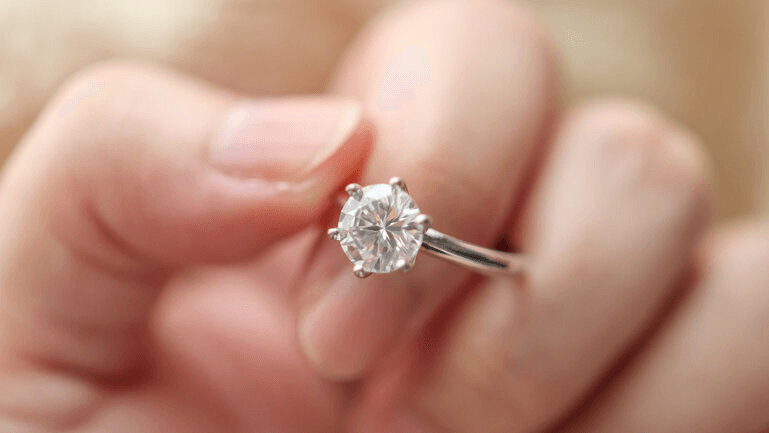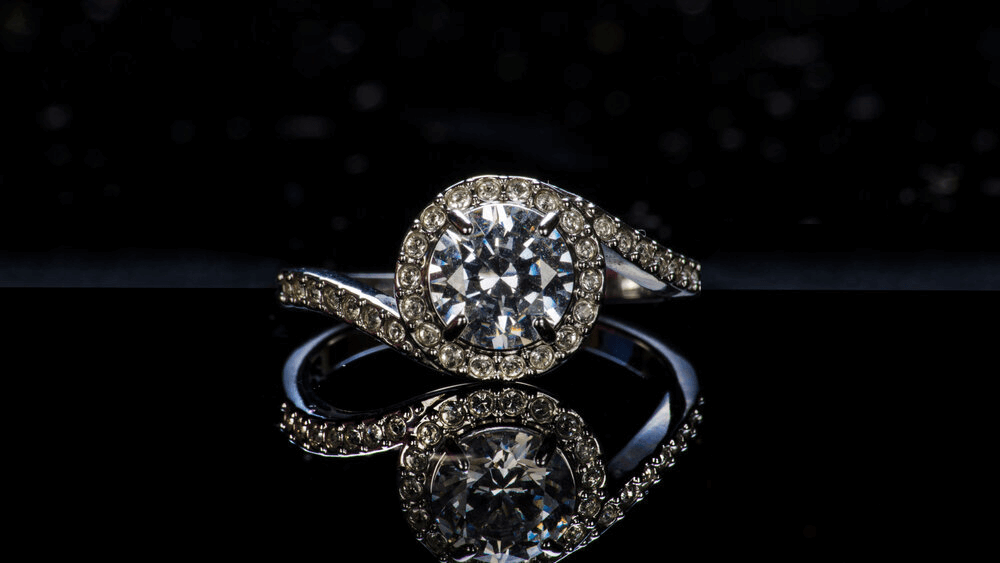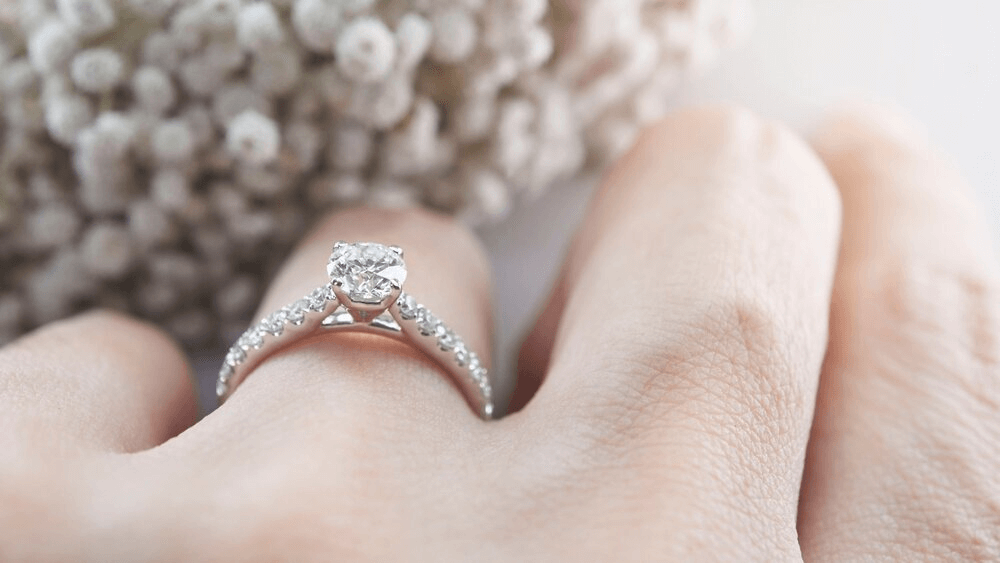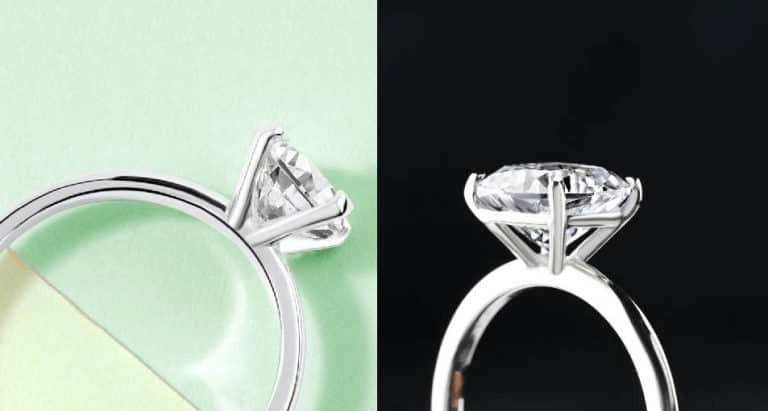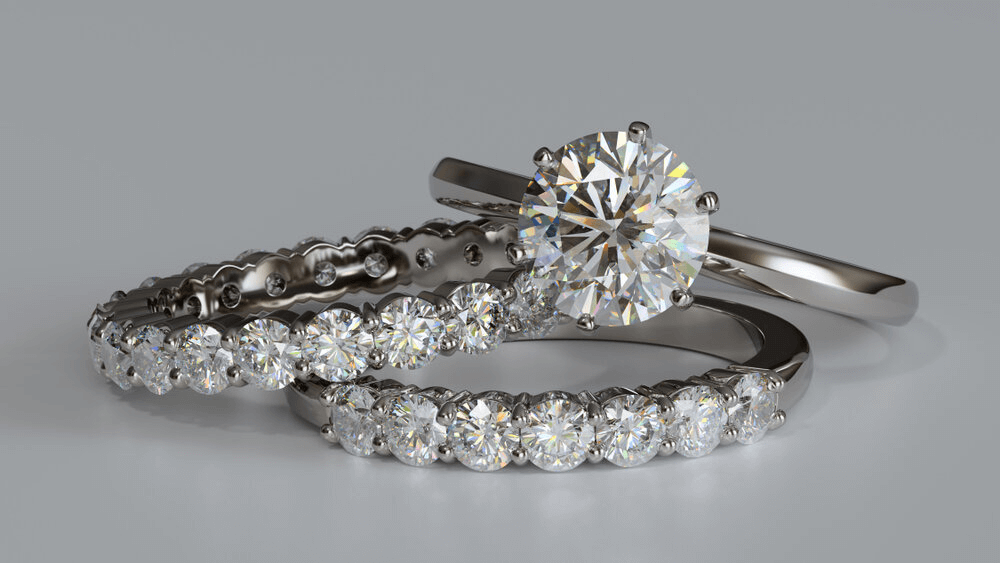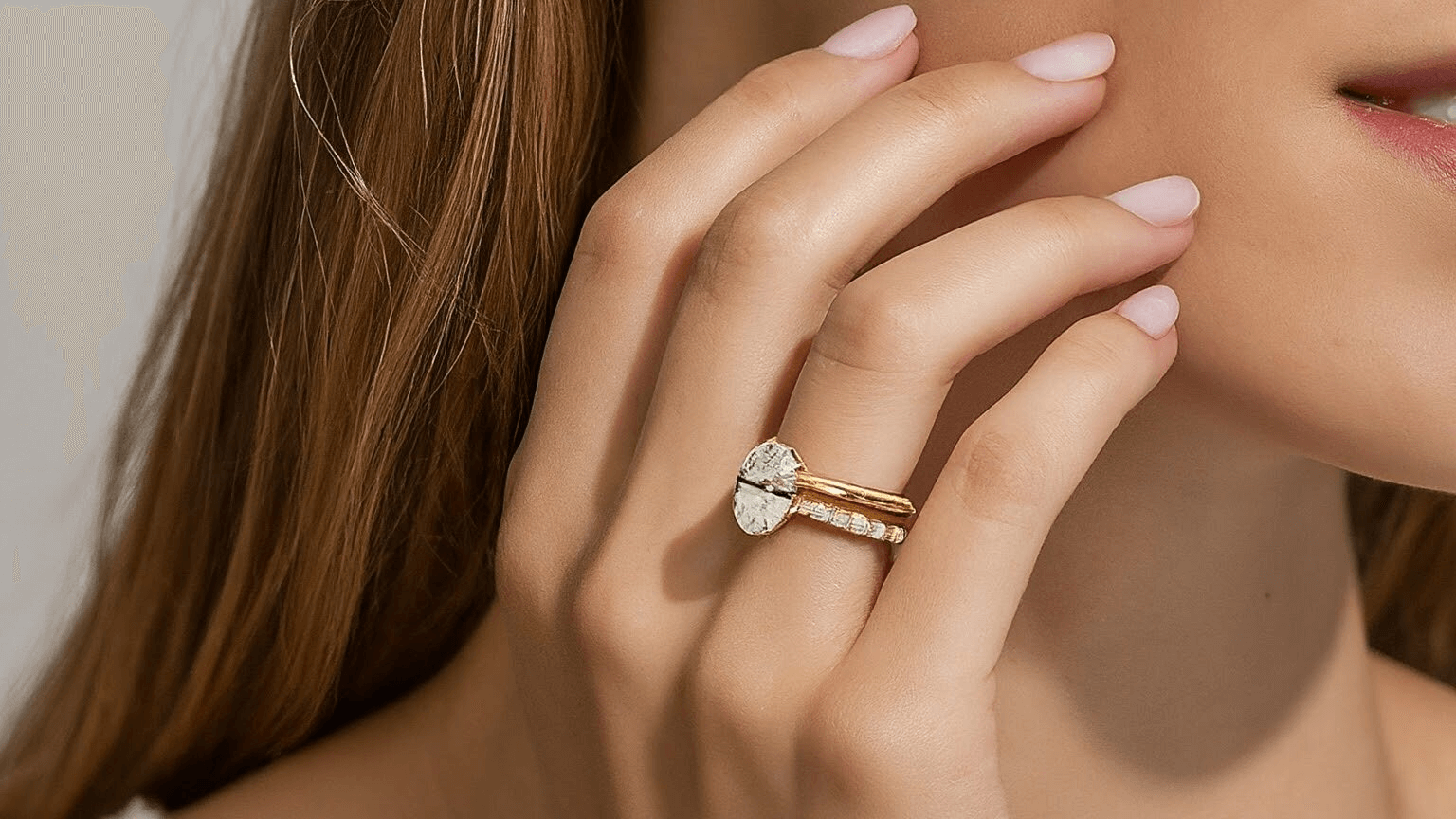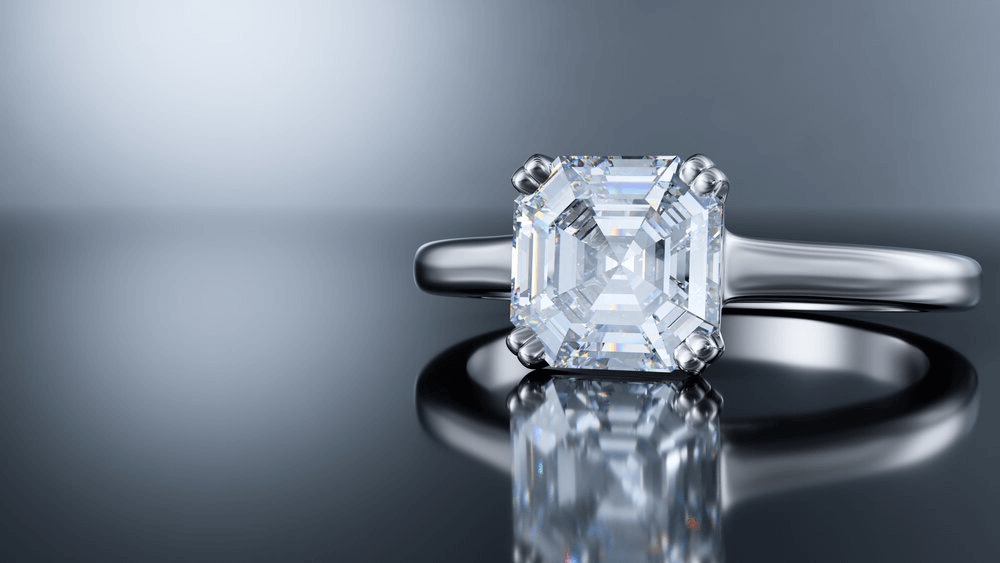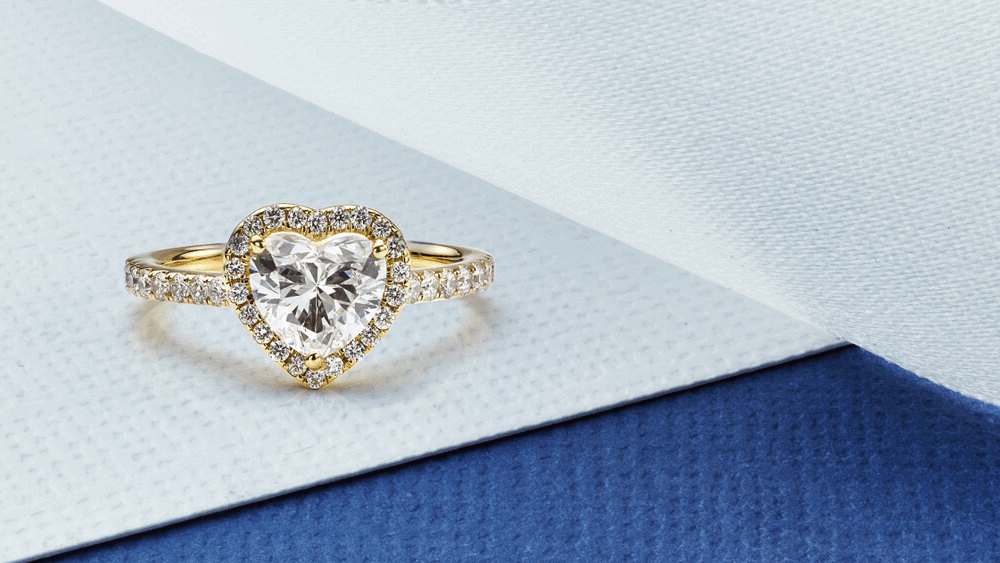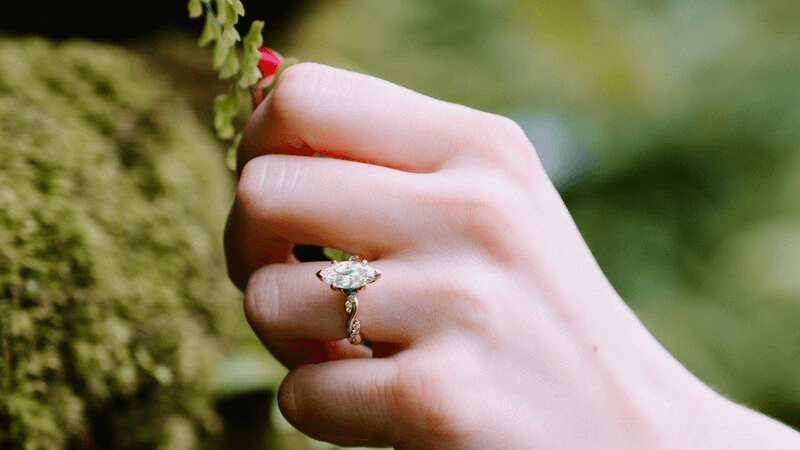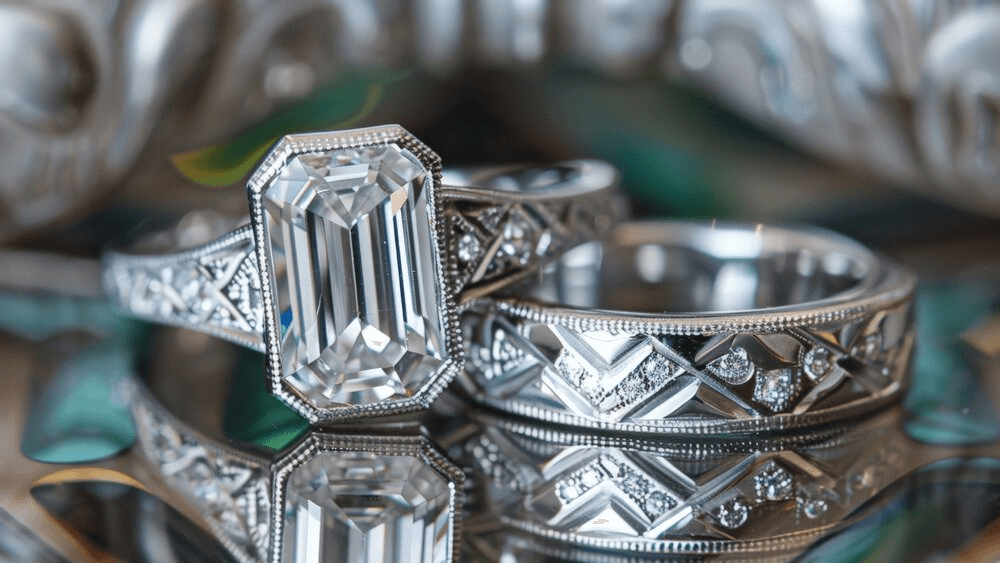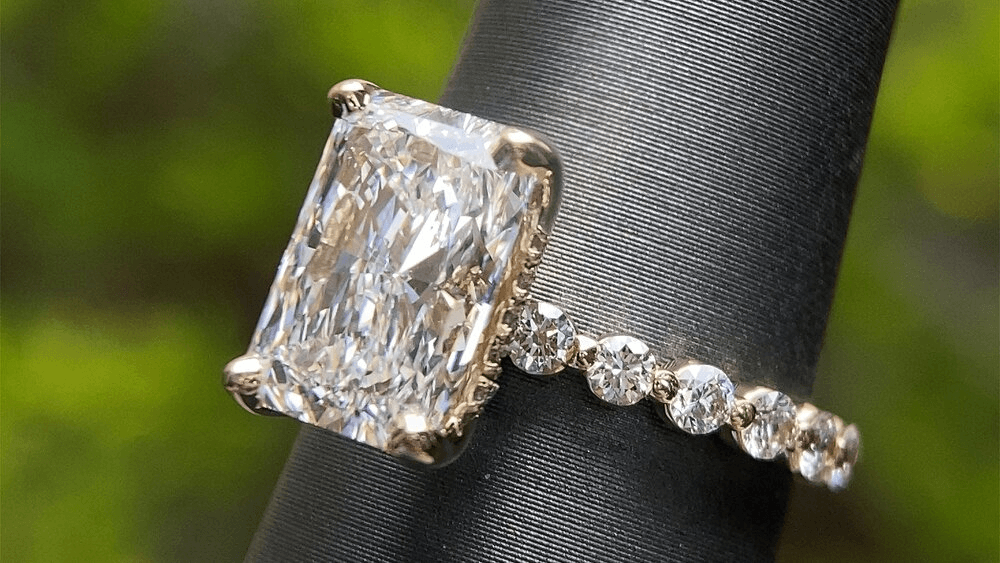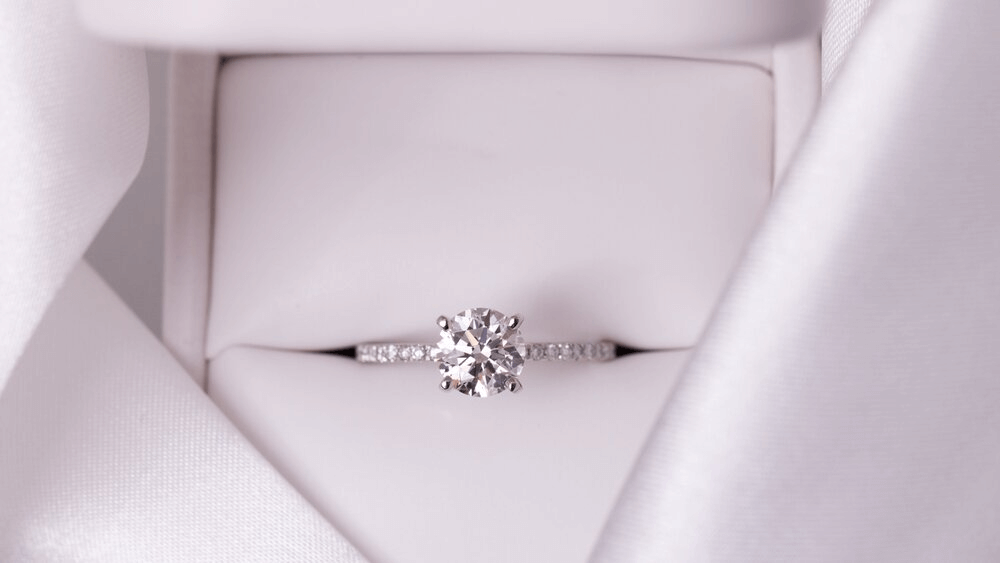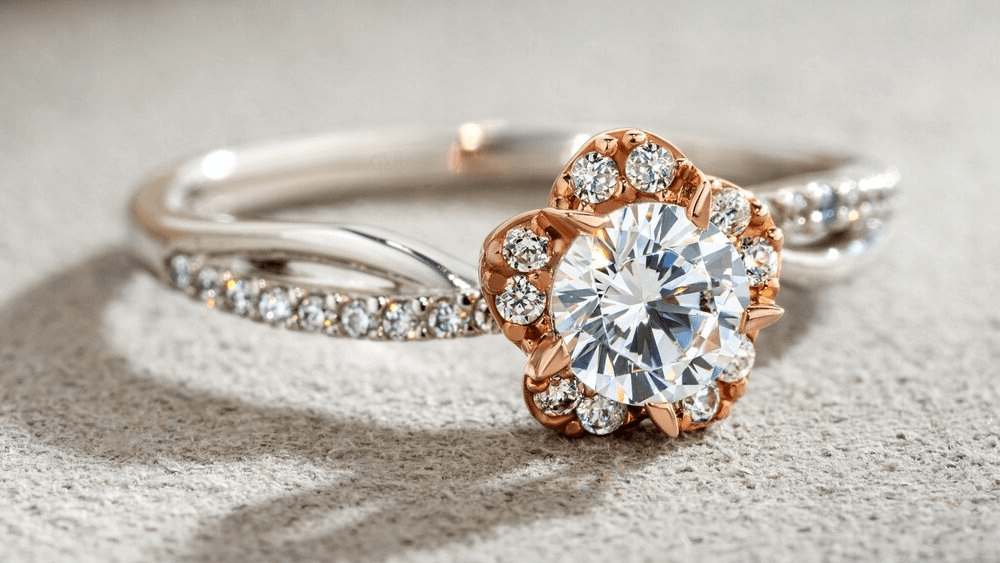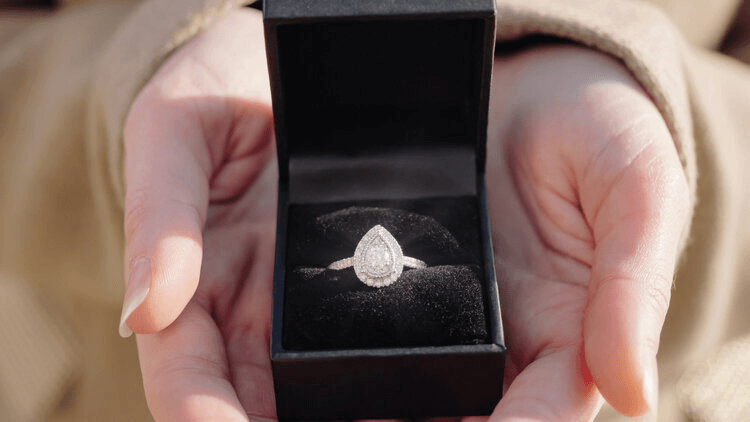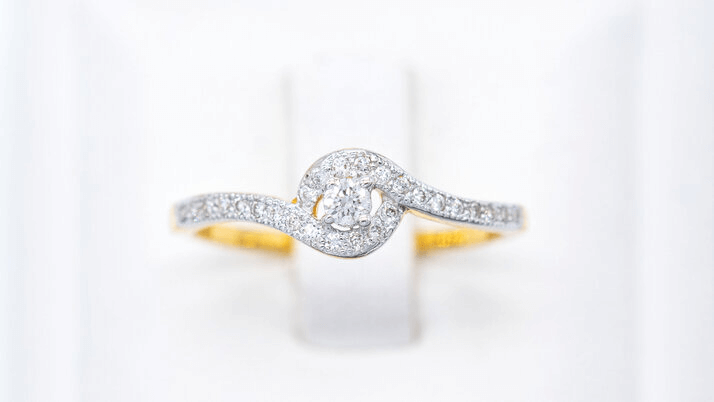Shocking Facts About Cushion Halo Rings Revealed

By Gary A.

Edited by Olivia H.
Published Mar 17, 2022
Edited on Mar 31, 2025
The blend of elegance and sparkle in a cushion halo diamond ring makes it the perfect choice for anyone seeking both timeless beauty and a little extra flair in their engagement ring.

Navigate This Guide:
- 7 Quick Tips for Buying a Diamond Engagement Ring: Cushion Halo Ring
- Introduction to Cushion Halo Rings
- Halo Effects: Illusion of Size and Sparkle
- Design Elements: Combining Round and Square
- Color Grades: What to Look For
- Metal Choices and Their Impact
- Other Considerations
- Our Expert Take
- 10 FAQs
Before we dive deeper into the specifics, here are some practical tips to help guide your decision-making process:
7 Quick Tips for Buying a Diamond Engagement Ring: Cushion Halo Ring
- Tip 1:Understand the Cushion Cut’s Unique Characteristics: Recognize that cushion cut diamonds blend square and round outlines, offering a classic look with a soft touch. Light Reflection: Know that cushion cuts are renowned for their fire and brilliance, but they may show color more than other cuts. Cut Quality: Pay attention to the cut quality as it greatly influences the sparkle and overall appeal of the diamond.
- Tip 2:Evaluate the Halo Setting Proportions: Ensure the halo complements, rather than overwhelms, the center stone. The size and number of stones in the halo impact the ring’s appearance. Halo Shape: Decide if you prefer a traditional square halo or a more modern look with rounded corners to match the cushion cut.
- Tip 3:Metal Choice: Consider the metal color and type for the setting, as it can affect the diamond’s appearance and the ring’s overall aesthetic.
- Tip 4:Consider Color and Clarity Grades: In a cushion halo ring, it’s important that the halo diamonds’ color closely matches the center stone to create a harmonious look. Clarity Impact: Understand that the clarity of the center stone is more noticeable in a cushion cut due to its large facets. Select a clarity grade that balances beauty and budget.
- Tip 5:Assess the Ring’s Proportions and Balance: Cushion cuts typically look smaller face-up compared to other cuts of the same carat weight. Ensure the ring looks balanced on your finger. Overall Design: Check how the cushion cut and halo interact to create the ring’s profile and ensure it aligns with your style preferences.
- Tip 6:Inspect the Craftsmanship Setting Quality: Examine the halo setting to ensure all diamonds are securely set and the craftsmanship is of high quality. Finishing Details: Look for a smooth finish, properly aligned stones, and no visible blemishes on the metal.
- Tip 7:Consider Lifestyle and Comfort: Think about how the ring will fit into your daily routine. High-set rings might catch on clothing, while more flush designs can be practical. Comfort: Try on the ring to check for comfort. A well-designed cushion halo ring should feel as good as it looks.
Now that you’ve got these practical tips, use Jeweler AI below to find the perfect engagement ring that suits your style and budget:
Introduction to Cushion Halo Rings
The Cushion cut is a crowd favorite for a very good reason – or, more accurately, a number of reasons. From its plush appearance to that dazzling display of colorful fire, it creates when the light hits – not to mention its versatile, classic shape – the Cushion is a timeless choice for your engagement ring.
While the laid-back Cushion solitaire may be a genuine rival to the Round Brilliant solitaire, there’s something irresistible about turning up the dial on luxury and pairing a beautiful Cushion cut with a bright, lavish halo setting.
This style has garnered plenty of attention over the years, with Sofia Vergara and Alison Pill both wearing Cushion cut halo engagement rings.
Here is everything you need to know about pairing this cut with a halo.
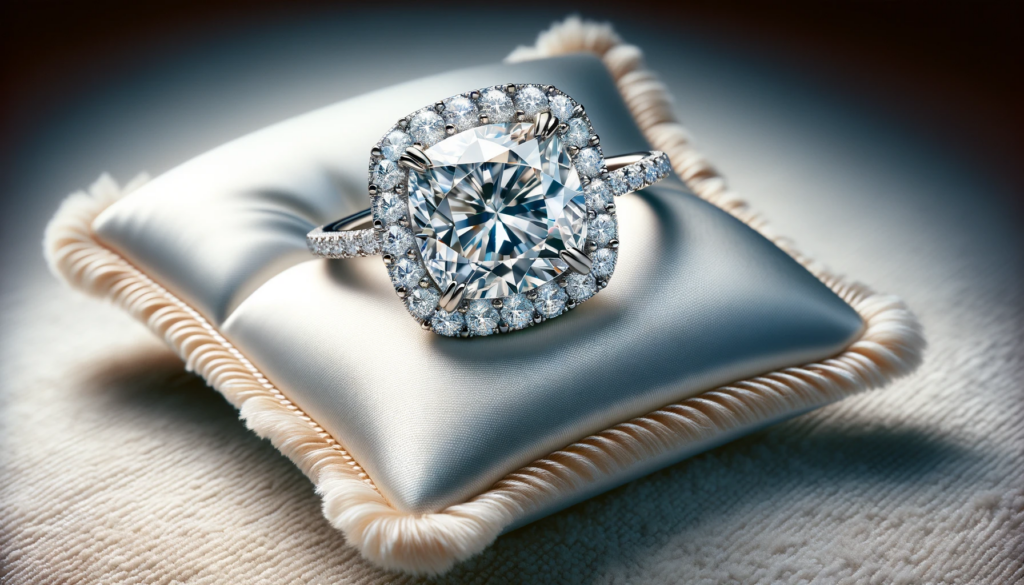
Halo Effects: Illusion of Size and Sparkle
Despite its popularity, the Cushion cut has one key downside: compared with other popular shapes, it has a smaller face-up appearance. By this, we mean that, when you’re viewing the stone from above (rather than side-on) it appears to be smaller than other diamonds of the same carat weight. This is an essential part of the cut since the high level of fire the Cushion creates is a result of its depth. More carat weight is held below the girdle, rather than in the crown.
For comparison, a 1 carat Round Brilliant should measure approximately 6.5 mm across, whereas a 1 carat Cushion cut to the right proportions will measure 5.5 mm. A 1 carat Princess cut (another square shape) will also measure 5.5 mm across, but its distinctively sharp corners tend to create the illusion of greater width and length.
The difference is relatively minor, but it can be enough to deter some shoppers away from the Cushion, even in spite of their love of the shape. There are, however, plenty of setting types capable of making diamonds look bigger, and the halo is one of the crowd favorites…
Understanding the Carat Total Weigh (CTTW)
Your ring’s CTTW (or TW) is the total weight of all the diamonds. Since diamond weight is measured in carats, a ring featuring more than one diamond will also come with a Carat Total Weight. So, if your center stone is 1 carat and all those smaller diamonds amount to 0.75 carats, your ring’s CTTW will be 1.75.
The great news is, that boost to your ring’s CTTW may also make the center diamond appear bigger. In general, a typical halo will create the illusion of a center stone around half a carat larger than it really is. As we mentioned, this illusion can be thrown off-balance if the halo is too large or cumbersome, but, as a general rule, this can be useful to keep in mind if you’re still on the fence about a halo setting.
What’s more, if your diamond is too small to start with, a halo is unlikely to make it look any bigger. Try not to go below the 0.75 carat mark, or everything may appear to be part of one, solid cluster.
Design Elements: Combining Round and Square
The name ‘halo’ instantly calls to mind images of those circular rings of melee diamonds but, these days, halos can be created in all kinds of shapes. Marquise halos and Pear halos, for instance, can follow the silhouettes of these shapes, and ensure none of that definition is lost or obscured by the melee diamonds.
The same goes for square shapes, like the Cushion and Princess. Square halos keep these shapes’ corners defined and maintain a strong visual difference between them and the softer Round Brilliant. These days, some shoppers even choose to pursue a combination of a square halo with a round diamond, in order to take advantage of the two shapes.
The Cushion gives you the best of both worlds. You could choose to combine it with a square halo with rounded corners, for the most exact fit, or with sharpened corners for a more modern look, without having to switch your stone out for a Princess cut. In this way, it’s possible for you to choose between a softer silhouette, and one with a little more edge to bring out a more contemporary side to the shape.
Color Grades: What to Look For
Cushion cut diamonds are valued highly for their plush shape and the intense fire that creates, but one of the potential downsides to the shape’s depth and unique light performance is that it can be a little less complementary to stones affected by a hint of color.
We say this is a ‘potential’ downside for two reasons. One is that, while Cushion cut diamonds can show color worse than some other shapes, it’s still perfectly possible for you to find a beautiful Cushion cut diamond without having to spend hundreds of dollars extra on a Colorless grade. A G or H color grade may be the best for you, although, for smaller stones, you’ll still find options in the I color range. Nevertheless, you don’t want to risk going too low and winding up with something that betrays itself under certain lighting conditions.
The other reason the Cushion’s ability to retain color is only a potential downside is because, for those seeking fancy color diamonds, this particular quality means that the Cushion represents one of the best choices. Colors can appear a little more vivid in Cushion cut diamonds, which is a major plus if fancy color is what you’re after.
Then again, the majority of people out for an engagement ring are looking for a white (colorless) diamond, which means working to find that sweet spot between overspending on a ‘perfect’ diamond and wasting that entire investment on a diamond that looks yellow.
There are ways of complementing a diamond that isn’t quite perfect in terms of color, and one of the most effective is combining it with a halo that boosts the appearance of colorlessness.
How Halos Can Improve the Appearance of Diamond Color
While they can’t literally improve the center stone’s color, the right halo can appear to give it a boost. For this reason, jewelers typically create the halo out of melee diamonds that are one or two color grades lower than the center stone (without going so low that they start to appear yellow).
If the jeweler were to use melee diamonds with a better color grade than the center stone, then the slight contrast could give the appearance of a diamond with a more discernible yellow tint.
Don’t use this as an excuse to invest in a Cushion cut with noticeable color, however. While halos can make a slight difference, they can’t totally transform a diamond into something far superior, and believing you can make a K diamond look like a G diamond with a halo is only going to cause disappointment further down the line.
How Halos Heighten Sparkle
We’ve already mentioned a couple times how the Cushion cut’s distinctive light performance is one of its most popular features, but, as with any other cut, there will always be some trade-off involved when you decide not to get a Round Brilliant for your center setting.
For most shapes, this trade-off is relatively minor. Obviously, for a step cut like the Emerald, shoppers have to make a much, much bigger sacrifice in terms of fire and brilliance but, when it comes to modified brilliants like the Cushion, the loss of sparkle isn’t too significant.
But, if a part of you still wants to boost the overall sparkle of your ring, then the halo is the most effective option. It’s great for adding a little extra brilliance to complement the fire of the Cushion since halos are almost always created using Round Brilliant melee diamonds (obviously the best choice for getting more of those stark, white flashes of light).
Metal Choices and Their Impact
Keep in mind that a diamond surrounded by a halo will naturally take on the color of your chosen metal a little more than it would if it were simply held in place using a basic four or six prong setting. This is particularly true for a Cushion. Its ability to retain color means that it will naturally reflect a white or rose gold setting quite noticeably.
This isn’t necessarily a negative. A lot of people love the look of gold reflecting through the center of a diamond – plus, it takes off the pressure to invest in a perfectly colorless diamond.
Nevertheless, it’s something to consider. A white gold or platinum center setting may be your best option if you’re going for that start, modern, crisp look, while the more romantic and warmer tones of yellow and rose gold will look beautiful in a totally different way.
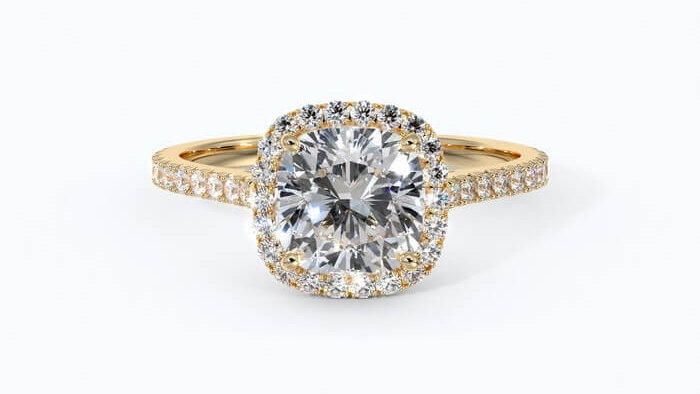
Other Considerations
The Double Halo
We’ve already mentioned how anyone using a halo setting is walking a fine line between complementing their diamond, and overwhelming it. Double halos can look great on the right ring – they create an incredibly scintillating, impressive center setting perfect for people with more outgoing styles – but, in other rings, they can look totally out of place.
Complementing any diamond means knowing when to add detail, and when to leave it out, and no one will understand that process better than someone who has devoted years to the craft. For instance, our partners A.Jaffe have over 130 years of jewelry-making experience. You cannot understate this level of tangible time investment, and their ability to meet and exceed their own high standards, let alone what you, as a customer, will expect.
Ultimately, there’s nothing wrong with creating a bulky, triple-halo ring, but don’t make the mistake of thinking that creating a halo ring is a case of, ‘Go big or go home’.
Prong Type
While they’re not as easy to spot on halo rings as they are solitaires, prongs are still an essential part of the overall design, and you’ll want to make sure you pay enough attention to these smaller details.
You can take a look at our guide to the different types of prong settings for more information on this subject.
A Popular Alternative: The Hidden Halo
Halos are beautiful and popular features, but they’re not quite everyone’s ‘cup of tea’. For starters, the added bulk isn’t always the most comfortable to wear, particularly if the wearer has a busy lifestyle, and, beyond that, the halo is a little more vulnerable to changing trends than some other ring designs.
That fact alone should not deter you from a halo if you know it’s up your partner’s street but, if there’s a part of you worrying about going for a full-blown halo, then a hidden halo may be the perfect choice.
Instead of encircling the full perimeter of the diamond, a hidden halo sits at the base of the pavilion, underneath the center setting. From above, it’s totally out of view but, when the ring is viewed from the side, it creates a beautiful, sparkling feature that doesn’t detract from the simplicity of the overall design.
Our Expert Take
It should come as no surprise that the halo is a particularly popular accompaniment to any diamond shape. Special commendations do, however, go out to the halo – the combination of that sumptuous, pillowy shape and the opulent halo is a match made in heaven, and an excellent choice for any bride-to-be with a real flair for luxury and glamour.
As always, our best advice is to gather your ideas and do your research early – long before the big day itself – so that you can search our diamonds with clear ideas. While the halo design is one of the most easily recognizable, there are plenty of subtle variations a good jeweler can work into the design in order to create something totally unique, and totally ‘her’.
10 FAQs
- Q: What is a Cushion Halo Ring?
- A: A cushion halo ring features a cushion-cut center diamond encircled by smaller diamonds in a halo setting. This style combines the soft, rounded edges of a cushion-cut diamond with the sparkle and elegance of a halo.
- Q: How Does a Cushion Halo Ring Differ from a Cushion Cut Ring?
- A: While a cushion cut ring refers to the shape of the center diamond, a cushion halo ring includes a halo of smaller diamonds around the center stone. The halo can be square, rectangular, or have softened edges to complement the cushion cut.
- Q: What are the Benefits of Choosing a Cushion Halo Ring?
- A: A cushion halo ring enhances the appearance of the center stone, making it look larger and more brilliant. The halo also adds extra sparkle and a luxurious feel to the ring.
- Q: How Do I Choose the Right Metal for a Cushion Halo Ring?
- A: Selecting the right metal depends on personal preference and lifestyle. Platinum and white gold are popular for their durability and modern look, while yellow or rose gold add a warm, vintage feel.
- Q: Can Cushion Halo Rings Be Customized?
- A: Yes, cushion halo rings offer a range of customization options, including the choice of metal, the design of the halo, and additional details like side stones or a unique band.
- Q: Are Cushion Halo Rings Suitable for Daily Wear?
- A: Cushion halo rings can be suitable for daily wear, but it’s important to consider the ring’s setting height and overall design for practicality and comfort.
- Q: How Should I Care for My Cushion Halo Ring?
- A: Regular cleaning with a soft brush and mild soap, along with annual check-ups with a jeweler to ensure the stones are secure, will keep your cushion halo ring in excellent condition.
- Q: How Does the Clarity of the Center Stone Affect a Cushion Halo Ring?
- A: The clarity of the center stone is important as cushion cuts have large facets that can make inclusions more visible. Choose a clarity grade that balances aesthetics and budget.
- Q: What is the Ideal Color Grade for a Cushion Halo Ring?
- A: The ideal color grade depends on personal preference and budget. However, it’s important to ensure that the halo diamonds’ color closely matches the center stone for a cohesive look.
- Q: Can I Pair a Cushion Halo Ring with a Wedding Band?
- A: Yes, cushion halo rings can be paired with a variety of wedding band styles. It’s advisable to try different band styles with your ring to find the perfect match.
FOLLOW-UP GUIDE SERIES





